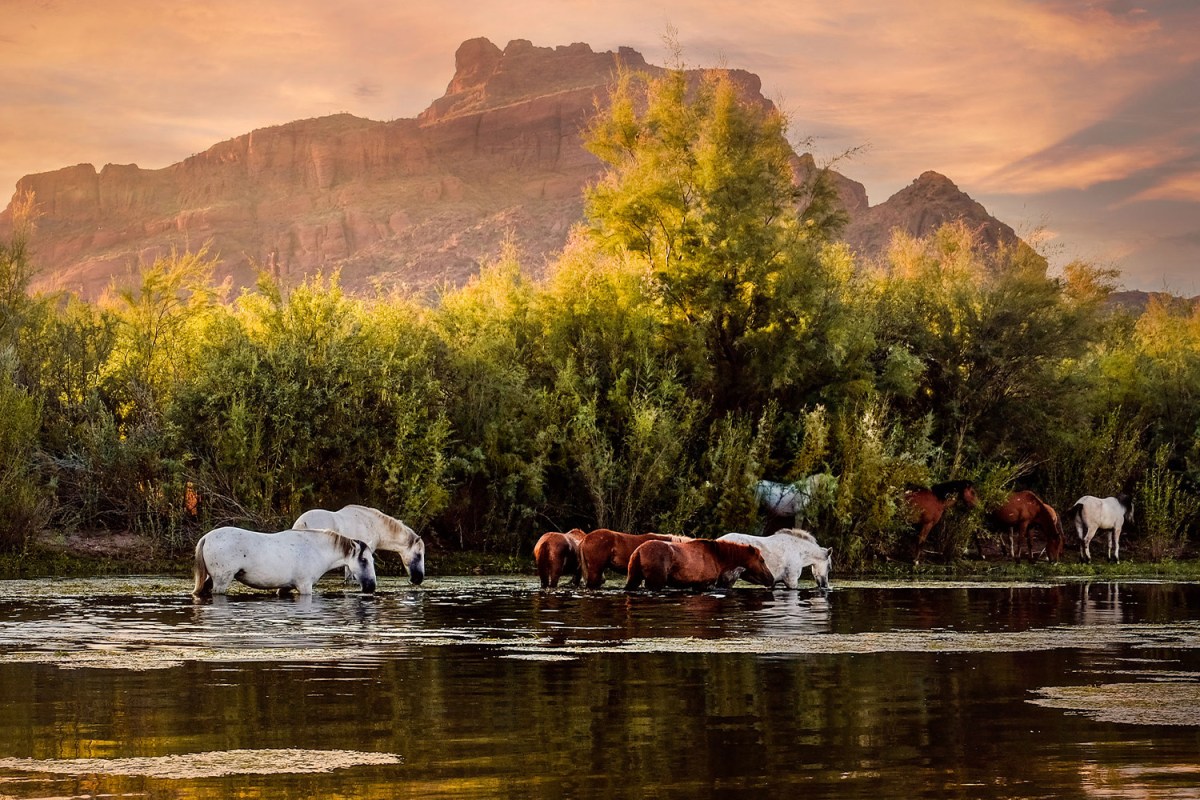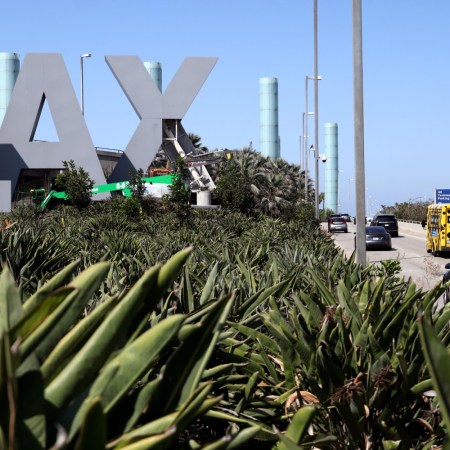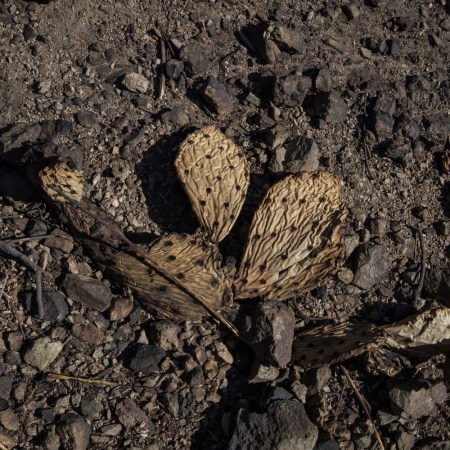Framed by the Superstition Mountains and swaths of giant saguaro cactus, Bush Highway in Mesa might be one of Arizona’s most scenic drives. It sweeps through 15 miles of Tonto National Forest, where Upland Sonoran Desert steadily gives way to Ponderosa pine-covered mountains just half an hour from downtown Phoenix. The lower Salt River also winds its way through here. Lined by mesquite, palo verde and acacia trees, it’s where the wild horses come to cool off, especially during the hot season when temperatures average over 100 degrees. The Tonto National Forest was established in 1905, but according to state records, wild horses roamed here many years before that.
From the Outer Banks of North Carolina to the Steens Mountain Wilderness in Oregon, there are several places to glimpse wild horses across North America. Thanks to the Salt River Wild Horse Management Group and its president Simone Netherlands, Tonto National Forest in Arizona is still one of them. Likely descendants of Iberian steeds brought over by 16th-century Spanish explorers, free-roaming mustangs along the lower Salt River draw tourists and horse lovers alike to this corner of the Grand Canyon State.
Father Eusebio Kino traveled through Sonora in the late 1600s bringing horses from Veracruz, hundreds of which were reportedly left behind following Mexico’s break with Spain in 1821. Simone Netherlands says that for horses to have been classified as “native stock and animals” in an article dated January 25, 1890, they would have been in the area at least 100 years prior. “The records we found effectively prove native wild horses lived here over a century beforehand,” she tells InsideHook. “Because of numbers recorded at the time and a lack of newspapers before then, they have likely been here at least 400 or 500 years.”
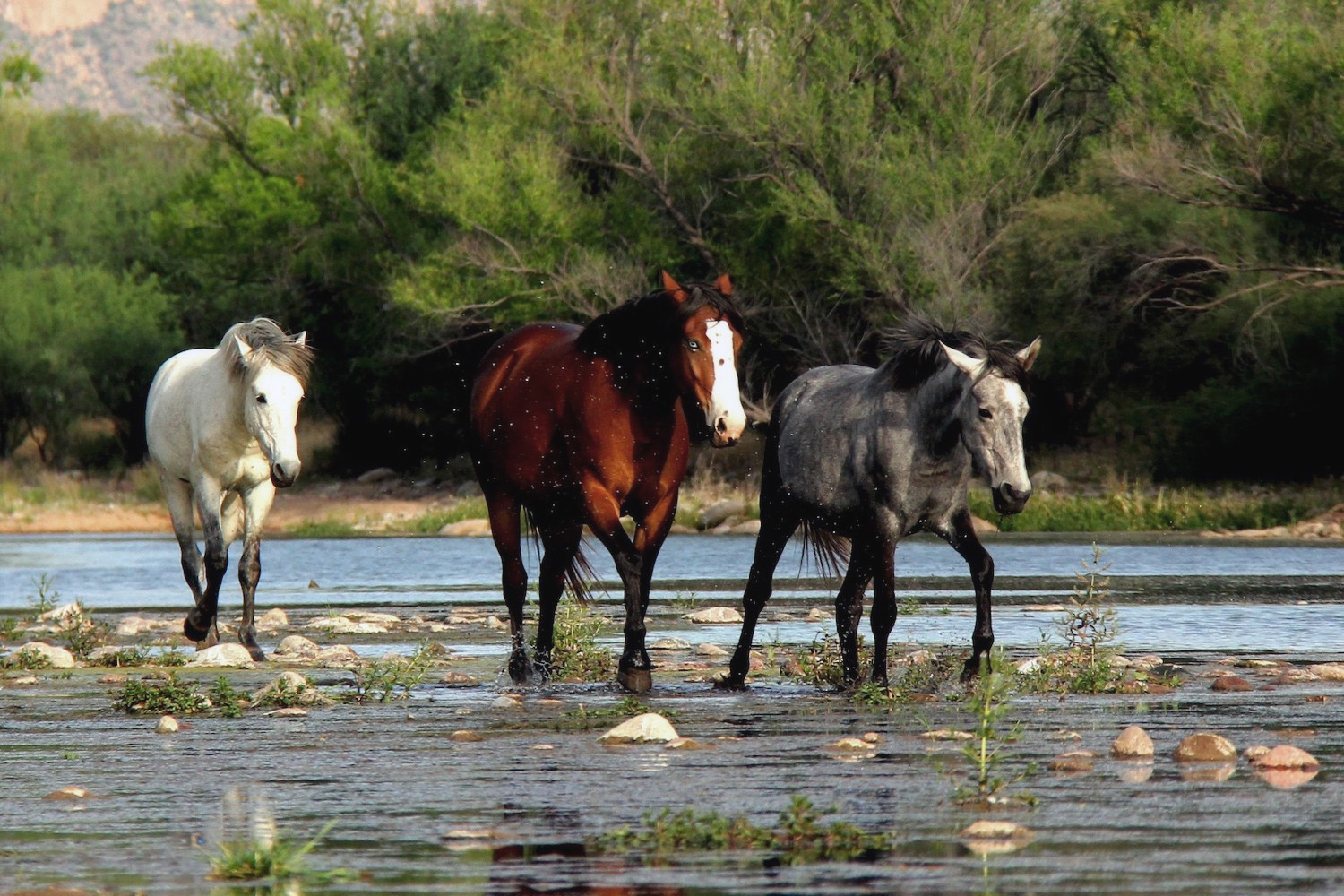
The History of Wild Horse Management
Declaring wild horses and burros as “living symbols of the historic and pioneer spirit of the West,” the 1971 Wild Free-Roaming Horses and Burros Act made killing or capturing mustangs (from the Spanish word mestengo, or “stray beast”) illegal. However, Netherlands explains, whether by failure or design, not all wild horses were designated a protected territory as part of that law. Classified “stray and unauthorized livestock,” as a result, they had no protection.
When left alone and unchecked by natural predators, wild horse herd sizes can increase by around 20% a year, with the government rounding up and removing thousands of them. As a result, tensions have simmered for decades between the Bureau of Land Management (BLM) and the U.S. Forest Service on one side, and wild horse organizations and advocates on the other.
The livestock lobby argues the horses are not “native American wildlife” but a primary threat to land health that decimates rangeland — basically, competition for domestic livestock permitted grazing on more than 150 million acres of public lands combined. The meat industry bankrolls a $1.35 federal grazing fee per “animal unit month” for cattle on public lands and those managed by the Forest Service. To their detriment, wild horses — primarily found in Herd Management Areas run by the BLM and Forest Service in lands across ten western states, from Montana to New Mexico — do not make anyone money. Assigned 47 million acres of public land when the Act passed 51 years ago, America’s wild horses now have only 26 million acres left to live on.
Saving the Salt River Horses
In 2015, the Forest Service issued a notice declaring the Salt River herd as unauthorized and announced a plan to capture, remove and auction off any that remained unclaimed. Netherlands, who founded the Salt River Wild Horse Management Group (SRWHMG) in 2014, rallied outraged residents and political leaders to oppose the roundup. The response was swift and successful. Countless hours of campaigning and 65,000 emails later saw HB 2340, the bill designed to protect Salt River horses, signed into law in Arizona in May 2016.
“We asked for time to prove we could reduce the population humanely through birth control and natural attrition,” explains Netherlands, adding that the group manages the horses under contract with the Arizona Department of Agriculture, a win-win for the government, the public and most of all for the horses. “The BLM has an annual budget of $110 million dollars but says humane management of wild horses is too costly and cannot be done efficiently. We have been managing these horses humanely, maintaining their safety and wellbeing, on less than $500,000 a year in donations and showing them that it can.”
Humane Herd Management
More than 100 volunteers dedicate spare days, evenings and entire weekends to help with fencing, road patrol, feeding, fundraising, cleanups and educating visitors at recreation sites. Equine veterinarians, paid entirely by public donations, assist with medical treatment and rescues. Records on each horse, including birth and death rates, migration patterns and herd dynamics, are also kept. Family bands usually consist of a lead and lieutenant stallion, a group of mares (female horses, including one who decides the daily grazing and watering routine), and their foals.
Select volunteers are trained to deliver a fertility control vaccine called PZP via remote darting, humanely limiting growth and maintaining a healthy population. Netherlands says the foal crop was 16 in 2020, with two last year. Before birth control was introduced over 100 were born in 2019. The herd currently stands at 438, but the goal is to reach a lower, still viable target number, sustainable for the land and horses. “We have stabilized population growth by getting the birth rate below the natural death rate, but ultimately our goal is to prevent removals and keep the horses on the Salt River where they belong.”
How to See the Wild Horses
You’ll need a Tonto Day or Discovery Pass to park at any recreation site along Bush Highway, including Coon Bluff, Phon D Sutton and Pebble Beach. Kayaking and SUPing the Salt River are popular, and, for the most part, low-impact ways to see the horses, but walking the trail or sitting quietly at sunrise or sunset can be the best times to spot them when on foot. The Salt River Wild Horse Management Group recommends being mindful of keeping a respectful 50-foot distance from the horses at all times.
At Saguaro Lake Guest Ranch, trail rides cross the river during cooler months when waters are low and climb into canyons along the lake’s edge during late spring and summer. Wild horses aren’t usually seen this far up, but Neiman, a lone bachelor stallion, was a regular fixture until he caught his leg in a cattle grate. A joint rescue effort between the SRWHMG, Arizona Department of Agriculture, Maricopa County Sheriff’s Office and Rural Metro Fire Central Arizona saw Neiman successfully freed and treated in March. Currently rehabbing at the group’s headquarters, he will be released once his leg has fully healed.
Wild Horse Pass
While the Tonto National Forest sits adjacent to the Salt River Pima-Maricopa Indian Reservation, 40 miles to the southwest, as many as 1,500 wild horses roam free across tribal lands of the Gila River Indian Community. Home to members of the Akimel O’odham (Pima) and the Pee-Posh (Maricopa) tribes, the only way to see the horses here is with KOLI Equestrian Center. (“Koli” means “corral” in the Pima language.) Rides can be booked directly with KOLI or via the Mustangs and Massage experience at the Sheraton Grand at Wild Horse Pass, where a private 90-minute morning ride is followed by an afternoon at the resort’s Aji Spa.
Of Pima descent, KOLI’s head wrangler Robert Pablo has a sixth sense for where wild horses of the Gila River like to find shade and take their dust baths. A favorite horse of Pablo’s father, Chuck — who has managed the equestrian center since 2004 — was an adopted and untrained wild mustang called Crazy Alice, who broke out and rejoined a local herd before finding her way back to him several years later via a tribal roundup. Today, Robert’s “go-to main horse” is her daughter Autumn, a petite but bulletproof six-year-old buckskin mare. Viewed as “an important part of their culture and beautiful part of their heritage,” members of the Gila River Indian Community have embraced, protected and humanely managed wild horses since 1995.
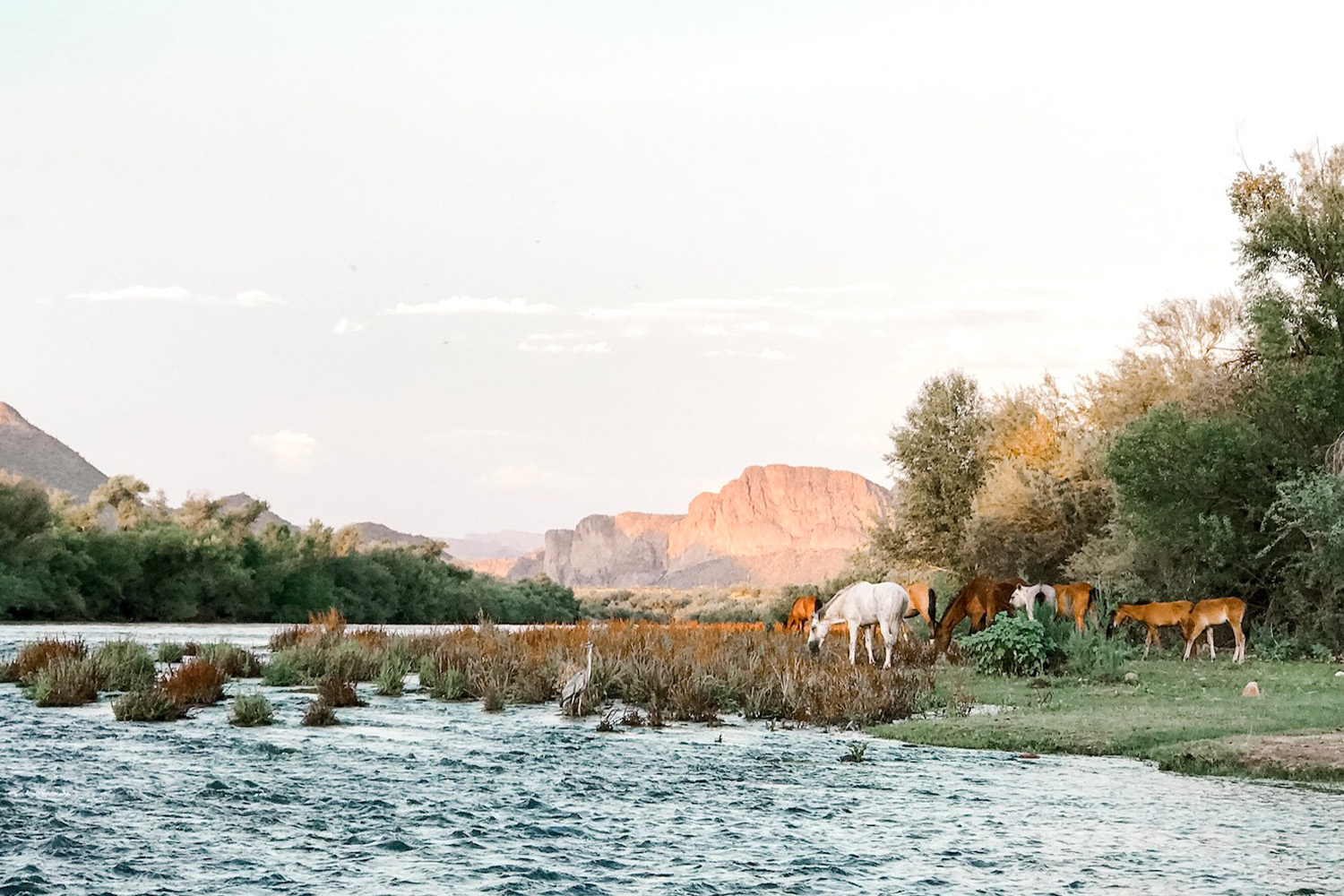
Zero-Impact Interactions
“When you get to see these beautiful animals in their natural habitat and watch their herd dynamics, it’s extraordinary,” says Netherlands, emphasizing that contrary to misinformation online, the horses are not fed every day at Coon Bluff. She also urges those visiting not to bring food. “It’s for safety reasons and to stop them from getting tame as it could cause their removal as well. We’re so lucky to have them here but want to make sure future generations get to see them, too.”
Netherlands won the battle for the Salt River herd, but she is scared the 400 wild horses her team is now fighting to save in the Apache-Sitgreaves National Forest near Alpine on the eastern edge of the state might not have such a storybook ending.
“Our research suggests the Alpine wild horses could be the most historic wild horses in Arizona. They roam along the Coronado Trail, which was used by [Francisco Vázquez de] Coronado in 1540, just 40 years after Columbus arrived in America,” she says. “It’s awful this is happening again, but we’re looking to assist by introducing a humane birth control program there, too.”
With Arizona’s wild horses an integral part of public lands, Netherlands will continue fighting to save them. “We need to keep historically important wild horses as they were destined to live — wild and free,” she says.
The Salt River Wild Horse Management Group receives no government grants and is funded entirely on public donations. Nineteen rescued Salt River wild horses can also be individually sponsored, including Neiman, Shadowfax and band sisters Iggy and Felicity, who were saved from a canal five years ago.
This article was featured in the InsideHook LA newsletter. Sign up now for more from the Southland.
